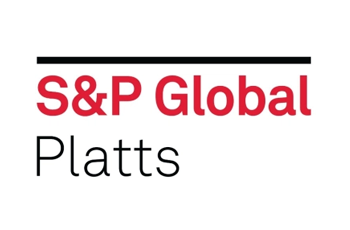Fracking Policy Monitor
 On balance, we are seeing more restrictive developments for oil and gas producers. New leadership of the EPA following the resignation of Scott Pruitt is likely to slow the federal regulatory rollback effort, as interim administrator Andrew Wheeler is set to employ a more methodological, detailed regulatory review process. Producers witnessed a major judicial setback in Pennsylvania, where an appeals court upheld the decision that the rule of capture does not apply to horizontal drilling, leaving producers potentially liable for subsurface trespassing. In Texas, the state regulator revealed that the majority of wells in the state had not been inspected in the last 5 years— of those inspected 13% had environmental violations.
On balance, we are seeing more restrictive developments for oil and gas producers. New leadership of the EPA following the resignation of Scott Pruitt is likely to slow the federal regulatory rollback effort, as interim administrator Andrew Wheeler is set to employ a more methodological, detailed regulatory review process. Producers witnessed a major judicial setback in Pennsylvania, where an appeals court upheld the decision that the rule of capture does not apply to horizontal drilling, leaving producers potentially liable for subsurface trespassing. In Texas, the state regulator revealed that the majority of wells in the state had not been inspected in the last 5 years— of those inspected 13% had environmental violations.
US Gas Short-Term Forecast - July
The upwardly revised US production outlook contributed to a markdown of prices — particularly with respect to this year and next. Platts Analytics marked down prices for the balance of the year by $0.24 to $2.88/MMBtu and for 2019, by $0.17/MMBtu to $2.75/MMBtu.
Export Strength, Below-Average Stockpiles to Override Falling Domestic Demand
Coal-fired generation fell year-over-year in June, but most U.S. coal prices were supported by gains in Atlantic Basin coal prices, elevated export levels and stockpiles that are below the five-year average. On the back of a number of bullish factors, we have increased our Eastern U.S. coal price forecasts this month, though our outlook for a modest slip in PRB prices remains in line with last month's view as domestic U.S. coal demand wanes.
 Long Term CA REC Prices Depend on Solar, Access to Remote Wind
Long Term CA REC Prices Depend on Solar, Access to Remote Wind
California RPS-eligible generation increased in 2017 mainly due to higher output from solar and small hydro facilities. Qualified renewable generation exceeded RPS requirements, resulting in a large increase in the REC surplus/bank. Most of this bank is held by the state’s three IOUs that have scaled-back procurement of new supplies. Uncertainty over tax legislation and potential solar tariffs impeded supply growth in 2017. Bearish developments include the CPUC IRP rule, liberal IRS guidance for claiming the solar ITC, and declines in solar PPA prices from non-California RFPs. Remote wind development remains a substantial downside risk to CA REC markets. In addition, Platts Analytics has revised CO2 allowance price projections upward. Ultimately, these developments are likely to exert strong downward pressure on prices. This report provides a Reference case and two alternative scenarios for Bucket 1 REC prices through 2040 along with a discussion of methodology and assumptions.
Propane Prices Slide for Second Consecutive Week
Front-month non-LST propane lost 2.7% week-on-week, ending the week at 90.4 cents/gal. As a percent of crude, propane made slight gains, reaching 56% at Friday’s price assessment. Normal butane was the only NGL purity product with a price increase last week supported by strong export demand. US propane/propylene stocks increased by 1.7 million barrels to 65.3 million barrels during the week ended July 13, according to EIA data. Total US inventories have tracked year-ago levels closely since mid-June after starting the year at a roughly 18 million barrel deficit to January 2017 levels. The EIA reported propane exports of 762,000 b/d for the week ended July 13. Arbitrage margins for US propane exports to Asia have been mostly favorable for the past several weeks. Exports are expected to be 1.05 million b/d for the week ending July 20. While steam cracker margins increased last week, cracker margins remain abysmally low.
U.S. ethanol followed corn futures lower the week ending July 16
Rising stocks and lower petroleum values put downside pressure on values. Manufacturing margins improved due to sharply lower corn costs. RIN prices were stable after declining sharply earlier this year. Ethanol production in the South-Central region of Brazil rose 30% year-on-year during the second half of June. European ethanol prices remained in a narrow range.
Two Iowa’s
After spending two days travelling through the Hawkeye State from east to west, it appears to be a Tale of Two Iowa’s. East of Interstate 35, which runs up and down the spine of the state, continues to impress. Stopping to speak with a handful of producers last Wednesday yielded the opinion that while their corn may not live up to production numbers posted ion 2017, they are hopeful that 2016 can be replicated. The beans look even better than the corn in our opinion, and that has some believing record bean yields can be attained while depressed prices remain the number 1 topic of conversation. Concerns about the corn crop center on the speed at which this year’s crop has matured. While the producers we spoke with hear what the agronomists are saying about discarding the maturation speed, they have their doubts. Ears that we pulled were mostly 16 around with very little sign of tip-back at this point, but it’s the finish that counts.
With Higher Runs in Japan, Demand Performance Increasingly Critical
Runs surged another 181 MB/D as maintenance winds down. Demand fell 199 MB/D, but is still trending higher on a four-week average basis. The crude stock build was tempered by the run increase, while finished product stocks built on the demand decline. Refining margins continued to improve slightly, but remain soft, while above average marketing margins eased. Demand performance going forward remains critical as runs will continue to rise in coming weeks.
How Strongly is China Growing, and How Will Trade Frictions Impact Future Growth?
China’s economic growth moderated during the second quarter, mainly due to credit deleveraging. Rising trade tensions did not figure in second quarter economic data, but that is bound to change in the coming periods. The proposed U.S. tariffs on Chinese goods will likely have large negative effects on China’s trade activity, and this should necessitate easing policy responses from the government. U.S. activity data for the second quarter pointed to solid economic growth. Taiwanese export orders data for June were disappointing.
U.S. SPR: Potential Use by President Trump Weighs on Prices
U.S. President Trump’s increasingly critical comments on OPEC policies and strengthening oil markets, his affinity for executive action, and upcoming midterm elections on November 6 raise the odds of an SPR release in coming months. A price-related SPR release ahead of elections is not unprecedented. President Clinton did so in the fall of 2000, releasing 30 MMBbl through an exchange just weeks before the Bush/Gore presidential election. Existing legislation gives Trump the ability to do something similar, most likely through a non-emergency sale or an exchange. For now, we do not assume a release will occur. Supply increases have been implemented from Saudi Arabia, UAE, Kuwait, Russia, and even Libya (despite the latest disruption at Sharara). Energy Secretary Perry predicted that Trump would not tap the SPR for price relief. But if an unexpected or larger disruption in Libya or elsewhere causes oil prices to surge anytime between now and November 6 midterm elections, especially as Iran sanctions start to bite, Venezuelan production continues to decline, and geopolitical risks to supply escalate, we would not be surprised if Trump attempted to lower pump prices for voters by releasing barrels from the emergency stockpile. A 30 MMBbl release over up to 2 months is the most likely scenario if Trump decides to act, given current legislative restrictions.
Oil selloff only partly feeds through to EU gas hubs. Will Brent movements regain influence?
Over the last 10 days, we’ve seen a sharp downward correction in oil markets (Brent) that’s only partly fed through to NW European gas hubs. This is in contrast to Q2-18 dynamics, where we saw oil, coal, and gas move up in tandem, and oil’s movements seemingly directly influencing European gas. Gas pricing dynamics coming back in line with gas fundamentals was our expectation. The question now is if fundamentals can remain in the driver’s seat.
Dollar Strength Creates Potential for LNG Demand Weakness, Particularly Come Winter
The focus on spot JKM as a standalone marker ignores the fact that each nation has their own version of JKM in their local currency. JKM pricing in dollars has been on a recent downtrend, however that is not true for all countries. In fact, even though 3Q’18 JKM is out turning a little lower than the peak months of last winter, it is far higher than that in many local currencies. High local pricing is presenting significant risks for demand-side weakness. This is particularly precarious, as Platts Analytics is forecasting supplies this winter to reach 18% higher than what landed last month. This is feeding into our bearish forecast for JKM for this winter, which is more than $1/MMBtu below the current market curve, even after the current dip in pricing.
German exports critical to clean dark spread levels and major drivers of 3Q and 4Q contracts
Low wind output in Germany has pushed the average month-to-date price to the highest level for July since at least 2010. On a longer timeframe though, and when also including solar, the relation between their combined output and prices tends to soften, and the analysis of the Clean Dark Spread (CDS) shows a disconnection emerging in some cases. The reason is that export capacity still plays a critical role in the German CDS profile. A seasonal decline of hydro output in the Alpine region, increasing tightness in the Nordic market and the Belgian nuclear issues are expected to drive a pick-up in German exports in Aug and Sep. The comparison with 2016 points to upside risk for the CDS in those two months, but the outlook for 4Q is more uncertain and the current level justified only by a continuation of the Nordic tightness.
Neutral Changes in Credit Conditions on the Week
It was a very neutral week, with the equity market unchanged and most of the credit metrics only modestly changed. Overall commodities were lower by -0.18%, while energy lost -1.7%. Ags rebounded 2.5%. There is still weakness in the industrial metals sub-index, with the uptrend support line remaining broken. Copper hit a new cyclical low at $2.69/lb on Thursday, but the Baltic Dry index performed well. The dollar was modestly lower. The St. Louis financial stress indicator showed lower stress levels on the week.
U.S. Commercial Stocks Have Large Increase
Overall commercial stocks built for the latest week by 6 million barrels, led by a crude storage increase of 5.8 million barrels. As anticipated, crude runs dropped sharply to 17.2 MMB/D, due to a number of unplanned events, supporting the stock gain. In addition, imports bounced back to almost 9.1 MMB/D, from the quite low level the prior week. For this week runs are expected to remain low at 17.1 MMB/D, but lower imports are expected to help lead to a small 0.7 million barrels crude stock draw. Cushing storage drew by 0.9 million barrels, bringing stocks down to a quite low 24.9 million barrels. For this week stocks are anticipated to show a small 0.3 million barrel build. Product demand saw a sharp post-holiday bounce back helping lead to a large light product inventory drop, led by gasoline’s 3.2 million barrels draw. Product stocks are expected to be roughly flat for this week’s report.
Global Equities Have a Neutral Week
Global equities had a largely neutral week. The U.S. S&P 500 was unchanged, as was Europe. Asia lost ground modestly. Among the U.S. indices, banking was higher by 3%, while retail gained 1.7%. Energy lost 1.8%. Internationally, Latin America gained 2.9%, with solid performances from Brazil and Argentina. China lost 1.6%.
U.S ethanol production Climbs
U.S. ethanol production jumped by 31 MB/D last week to 1,064 MB/D following the holiday-shortened week. Ethanol stocks declined for the first time in four weeks, dropping by 625 thousand barrels to 21.8 million barrels. Gulf Coast inventories dipped from an all-time high in the preceding week. Ethanol-blended gasoline production sunk along with lower gasoline output, falling by 163 MB/D to a six-week low 9,058 MB/D.
US Gas Weekly Report
Entering Thursday’s EIA storage report, the balance of the 2018 strip was trading near its respective year-to-date lows. Despite yesterday’s post-EIA storage report rally, prices remain in oversold conditions. Based on the NYMEX nearby continuation chart, remaining market bulls were able to hold support at $2.70/MMBtu this week. Yet, the charts still show the bears are in control. It will likely take a close above ~$2.80/MMBtu to begin to change that narrative.
Coal Prices Slip for Second Straight Week
Despite a midweek rally, seaborne thermal coal prices ended last week down compared to the end of the prior week, with the CIF ARA and FOB Newcastle forward curves falling by $2-3/mt beyond the very prompt contracts. A considerable downturn in oil and LNG prices likely weighed on seaborne coal pricing, although reports of somewhat underwhelming coal demand in China (which are in line with Platts Analytics’ expectations) seemed to play a role as well. While thermal coal supply and demand fundamentals should pull prices lower, we believe that the market needs to be further convinced that balances will loosen and stockpiles will be adequate going into the winter.
Demystifying Mystic: Impacts of FERC Order In ISO-NE
FERC's July 13 order granting Mystic unit 8 & 9 a cost-of-service agreement takes place during ISO-NE's first implementation of the two-stage Competitive Auctions with Sponsored Policy Resources (CASPR) for the 2022-2023 period. Fuel security concerns regarding the accompanying Distrigas LNG terminal are cited in the FERC order, and appear critical to reliable ISO-NE operations. If Mystic participates in Forward Capacity Auction (FCA 13) as proposed, Platts Analytics estimates a clear roughly $0.72/kW-m lower than FCA 12's price of $4.63/kW-m.
New EU Car/Van Emissions Standards: Implications for Fleets and Fuels
The EC proposed policy that re-established 2020-2021 new vehicle emissions targets and set new average fuel economy goals for the years 2025 and 2030. This report provides Platts Analytics’ review of the policies and targets, a sense of how these may change prior to finalization, and insight into likely compliance pathways for automakers, including our reference compliance scenario and the implied fuel demand and emissions implications. With the new policy, battery electric vehicles and plug-in hybrid electric vehicles become a dominant drivetrain in the passenger vehicle sector. Light commercial vehicles also see significant increases in alternative fuel vehicle penetration that trends toward zero tail-pipe emissions. Together with improvements in internal combustion engine vehicle efficiency, this will place downward pressure on EU light duty vehicle gasoline and diesel demand.
Asian Oil Demand: Growth Again Drops Sharply on China Balances, Rebound Expected
For the second straight month our snapshot of major country Asian oil demand growth again fell sharply to only 34 MB/D. It had been 188 MB/D in the June snapshot and as high as 1,013 MB/D in April. The July snapshot was expected to show improvement, but the latest June balances for China skewed performance to the downside. China’s crude imports were exceedingly low in June, which was a major driver. There is a limit to how aggressively Chinese crude stocks can be drawn and a rebound in imports will be required. Improvement in Asian demand performance is still expected in the Sept-Nov snapshots, with growth recovering to 0.9-1.0 MMB/D. Major country demand growth for 2018 is slated at 755 MB/D vs. 904 MB/D seen in 2017. Total Asian demand growth in 2018 is expected to be 945 MB/D vs. 1,122 MB/D seen in 2017. Chinese apparent demand is expected to rebound from the 154 MB/D seen in 1H18 to 635 MB/D in 2H18.
The information above is part of S&P Global Platts Analytics weekly Energy Market Recap – which alerts readers to our current analysis of energy markets around the world as well as the key economic and political factors driving those markets. To read S&P Global Platts Market Recap first, subscribe here.
Click here for additional information on S&P Global Platts Analytics global energy commodity market research services.


